Let’s Hit the Hay!
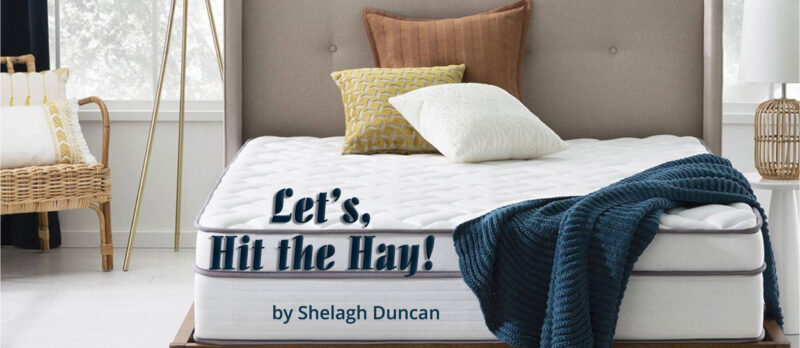
We spend much of our life sleeping. Naturally, where and what we sleep on forms an essential part of our quality of life. Mattresses are the most common bedding material that people use all over the world. We seldom give it a second thought unless we need to buy a new one—but what’s the story behind this one item in our home that we use more than anything else?
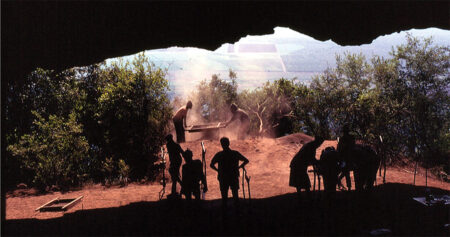
The development of mattresses began as soon as early man discovered fire. They left the security of trees and started to sleep on the ground as the fire kept night predators at bay. They often used stones covered with grass, straw, and animal skin to sleep. Later came the cave dwellers, and just last year researchers discovered fossilized bedding used by ancient humans dating back about 200,000 years at a site in South Africa called Border Cave*. This bedding even used a base of ash to deter the crawling critters!
In ancient Persia and Egypt evidence shows that goat skins filled with water were also used to lie on—the first waterbeds perhaps? The powerful Egyptians also decided to make platforms to raise themselves above the nighttime crawlers and many very elaborate ones were discovered in Tutankhamen’s tomb. The common people had a mat on the ground or a simple wood platform with stuffed cushions and their pillows were often a stone! However, wool was already being woven at this time so warm blankets kept them cozy. The wealthier Greeks and Romans followed Egypt’s elite with their raised metal beds and used woven supports to hold long cotton, feather or straw filled bags: the first mattresses?
The European Middle Ages saw peasants using bags stuffed with things like straw, pea pods, wool, hair, rags, and feathers on a low platform that was usually shared with the family and maybe even their animals for warmth. These would be rolled up and put away during the day. However, the poorest people slept simply on straw or fodder hay.
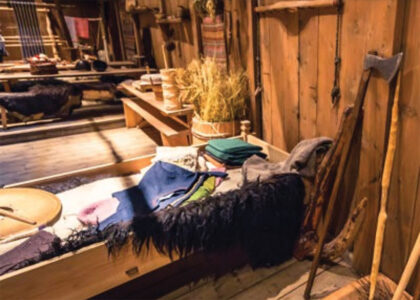
in Lofotr Viking Museum
The Vikings however, were already displaying minimalist Scandinavian design with simple slatted wood beds that could be easily loaded on and off their ships for their voyages. Think early IKEA flat-packed furniture! They would use straw and animal skins to lie on.
The wealthy had elevated platforms (beds) made of ornately carved wood and encrusted with jewels or gold. Four poster beds became popular and side draperies were added to the bed to provide sleepers with warmth and privacy. The ‘mattresses’ were thickly stuffed with straw, wool, or feathers and down and covered with soft velvet, and silk.
Early Renaissance peasants slept on a hay stuffed bag on the floor or a simple platform. The merchant middle class had poster beds with well cushioned mattresses filled with straw, wool, feathers and down, the wealthy as always enjoyed richly embellished beds with mattresses covered with soft velvet, brocade or silk.
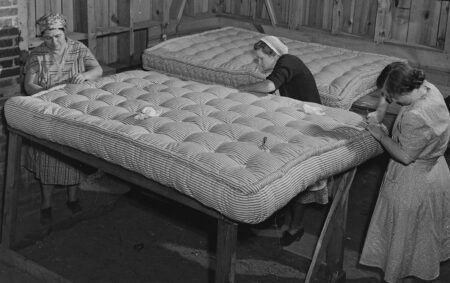
It was not until the 18th century that mattresses really started to resemble modern-day counterparts. Only soft cotton and wool were used as fillings and they later included items like horsehair and coconut fibers, and linen and cotton became popular covers for these mattresses. The combination of the new iron beds and linen/cotton mattresses helped create a more bug-free environment which wasn’t possible with the older wooden beds.
However, the first major development for mattresses came in 1865—the cast iron spring! This was patented in the UK, and designed to be used in seats for horse drawn carriages on the bumpy cobblestone roads! Next, from the US came the Bonnell spring in 1889 and named after the person who patented this unique hourglass shaped coil.
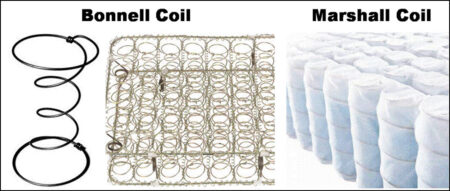 In Canada in 1899 British-born engineer James Marshall invented and patented the coil for the “inner-spring mattress”. These were cylindrical coil springs that were individually encased in fabric and provided more support and less movement than the Bonnell. The Marshall Coil is still very popular today and is used in most premium mattresses.
In Canada in 1899 British-born engineer James Marshall invented and patented the coil for the “inner-spring mattress”. These were cylindrical coil springs that were individually encased in fabric and provided more support and less movement than the Bonnell. The Marshall Coil is still very popular today and is used in most premium mattresses.
After that the 20th century brought us a more vegan version of the waterbed, futons, and foam rubber mattresses. The natural latex foam is famously said to have originated from an experiment with a kitchen blender, and in 1929 Dunlop Rubber in the UK patented ‘Dunlopillo’. In the early days Latex foam mattresses were not as popular because they were a lot more expensive than their petroleum-based foam counterparts. However, they are becoming more popular these days mainly because of their eco-friendly and cooling properties.
In 1966 NASA developed the synthetic rubber “Memory Foam”, and around 1991 the first memory foam mattresses entered the marketplace and they are still very popular and affordable.
The 21st century has seen some of the most rapid progress with mattress development, and also a greater understanding about the science of sleeping has provided many wonderful improvements.
Now we can ask ourselves these questions before buying a mattress and choose the most suitable option for our sleeping habits:
- What position do I sleep in?
- What firmness do I prefer?
- How much do I weigh?
- What type of mattress do I prefer?
- What’s my budget?
Also, remember that Costa Rican mattresses are different sizes than the in US, Canada and Europe. Check the dimensions of your bed carefully before you buy a new mattress!
The mattress has come a long way since the earliest hay-lined pits, but the basic concept is unchanged—a comfortable, safe and warm place to sleep and re-charge your batteries.
So, let’s hit the hay!**
*sci-news.com/archaeology/border-cave-beds-08750.html
**Hitting the hay helped dislodge bugs and unwanted critters before you lay down to sleep.
Until next time…
Shelagh
Royal Palm Interiors – Uvita – 2743-8323
royalpalminteriors.com
Like us on facebook.com/RoyalPalmInteriors

